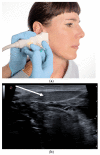Use of Botulinum Neurotoxin in Parkinson's Disease: A Critical Appraisal
- PMID: 33503872
- PMCID: PMC7910947
- DOI: 10.3390/toxins13020087
Use of Botulinum Neurotoxin in Parkinson's Disease: A Critical Appraisal
Abstract
For well over 30 years, the botulinum neurotoxin (BoNT) has been used for a large number of indications, some of which however have not been licensed. Admittedly, approval varies in many countries and this permits a large spectrum for evaluation. Thus, BoNT is used for patients with Parkinson's disease (PD) and other Parkinson's syndromes (PS) in varying degrees of frequency. We have to distinguish between (1) indications that are either approved or (2) those not approved, (3) indications that might be a result of PS and (4) finally those which appear independent of PS. The most important indication for BoNT in PS patients is probably sialorrhea, for which approval has been granted in the majority of countries. Cervical dystonia is a frequent symptom in PS, with anterocollis as a specific entity. A further indication is blepharospasm in the different forms, especially the inhibition of eyelid opening in atypical PS. The use of BoNT in cases of camptocormia, the Pisa syndrome and neck rigidity is still a matter of debate. In dystonia of the extremities BoNT can be recommended, especially in dystonia of the feet. One well-known indication, for which however sufficient data are still lacking, involves treating tremor with BoNT. As to autonomic symptoms: Focal hyperhidrosis and detrusor hyperactivity can be mentioned, in this last case BoNT has already been approved. A number of further but rare indications such as freezing-of-gait, dyskinesia, and dysphagia will be discussed and evaluated.
Keywords: Parkinson’s disease; Pisa syndrome; blepharospasm; botulinum neurotoxin; camptocormia; dyskinesia; focal dystonia; non-motor symptoms; sialorrhea; torticollis; tremor.
Conflict of interest statement
W.H.J. is speaker and advisor for: Abbvie/Allergan, Bial, Desitin, Ipsen, Merz, UCB, and Zambon.
Figures




Similar articles
-
An update on the use of botulinum toxin therapy in Parkinson's disease.Curr Neurol Neurosci Rep. 2015 Jan;15(1):511. doi: 10.1007/s11910-014-0511-3. Curr Neurol Neurosci Rep. 2015. PMID: 25407133 Review.
-
Therapeutic Applications of Botulinum Neurotoxin for Autonomic Symptoms in Parkinson's Disease: An Updated Review.Toxins (Basel). 2021 Mar 19;13(3):226. doi: 10.3390/toxins13030226. Toxins (Basel). 2021. PMID: 33808714 Free PMC article.
-
Disease-oriented approach to botulinum toxin use.Toxicon. 2009 Oct;54(5):614-23. doi: 10.1016/j.toxicon.2008.11.013. Epub 2008 Dec 6. Toxicon. 2009. PMID: 19073203 Review.
-
Botulinum toxin in the management of parkinsonian disorders.Toxicon. 2023 Aug 15;232:107209. doi: 10.1016/j.toxicon.2023.107209. Epub 2023 Jul 8. Toxicon. 2023. PMID: 37429465 Review.
-
Use of botulinum toxin in Parkinson's disease.Parkinsonism Relat Disord. 2019 Feb;59:57-64. doi: 10.1016/j.parkreldis.2018.12.002. Epub 2018 Dec 11. Parkinsonism Relat Disord. 2019. PMID: 30579818 Review.
Cited by
-
Botulinum toxin therapy in Parkinson disease-related lower limb dystonia. An 8 year retrospective review.Clin Park Relat Disord. 2024 Jun 10;11:100260. doi: 10.1016/j.prdoa.2024.100260. eCollection 2024. Clin Park Relat Disord. 2024. PMID: 39777306 Free PMC article.
-
Research Progress of Camptocormia in Parkinson Disease.Clin Spine Surg. 2025 Mar 1;38(2):39-44. doi: 10.1097/BSD.0000000000001674. Epub 2024 Sep 9. Clin Spine Surg. 2025. PMID: 39248348 Free PMC article. Review.
-
Pharmacological Treatment of Tremor in Parkinson's Disease Revisited.J Parkinsons Dis. 2023;13(2):127-144. doi: 10.3233/JPD-225060. J Parkinsons Dis. 2023. PMID: 36847017 Free PMC article. Review.
-
Movement Disorders and Musculoskeletal System: A Reciprocal Relationship.Mov Disord Clin Pract. 2021 Dec 16;9(2):156-169. doi: 10.1002/mdc3.13390. eCollection 2022 Feb. Mov Disord Clin Pract. 2021. PMID: 35146055 Free PMC article. Review.
-
Treatment of axial postural abnormalities in parkinsonism disorders: A systematic review of pharmacological, rehabilitative and surgical interventions.Clin Park Relat Disord. 2024 Mar 12;10:100240. doi: 10.1016/j.prdoa.2024.100240. eCollection 2024. Clin Park Relat Disord. 2024. PMID: 38596537 Free PMC article.
References
-
- Simpson D.M., Hallett M., Ashman E.J., Comella C.L., Green M.W., Gronseth G.S., Armstrong M.J., Gloss D., Potrebic S., Jankovic J., et al. Practice guideline update summary: Botulinum neurotoxin for the treatment of blepharospasm, cervical dystonia, adult spasticity, and headache: Report of the Guideline Development Subcommittee of the American Academy of Neurology. Neurology. 2016;86:1818–1826. doi: 10.1212/WNL.0000000000002560. - DOI - PMC - PubMed
-
- Jost W.H. Zulassungen der Botulinumtoxin-A-Präparate. Psychopharmakotherapie. 2018;25:240–242.
Publication types
MeSH terms
Substances
LinkOut - more resources
Full Text Sources
Other Literature Sources
Medical
Research Materials

